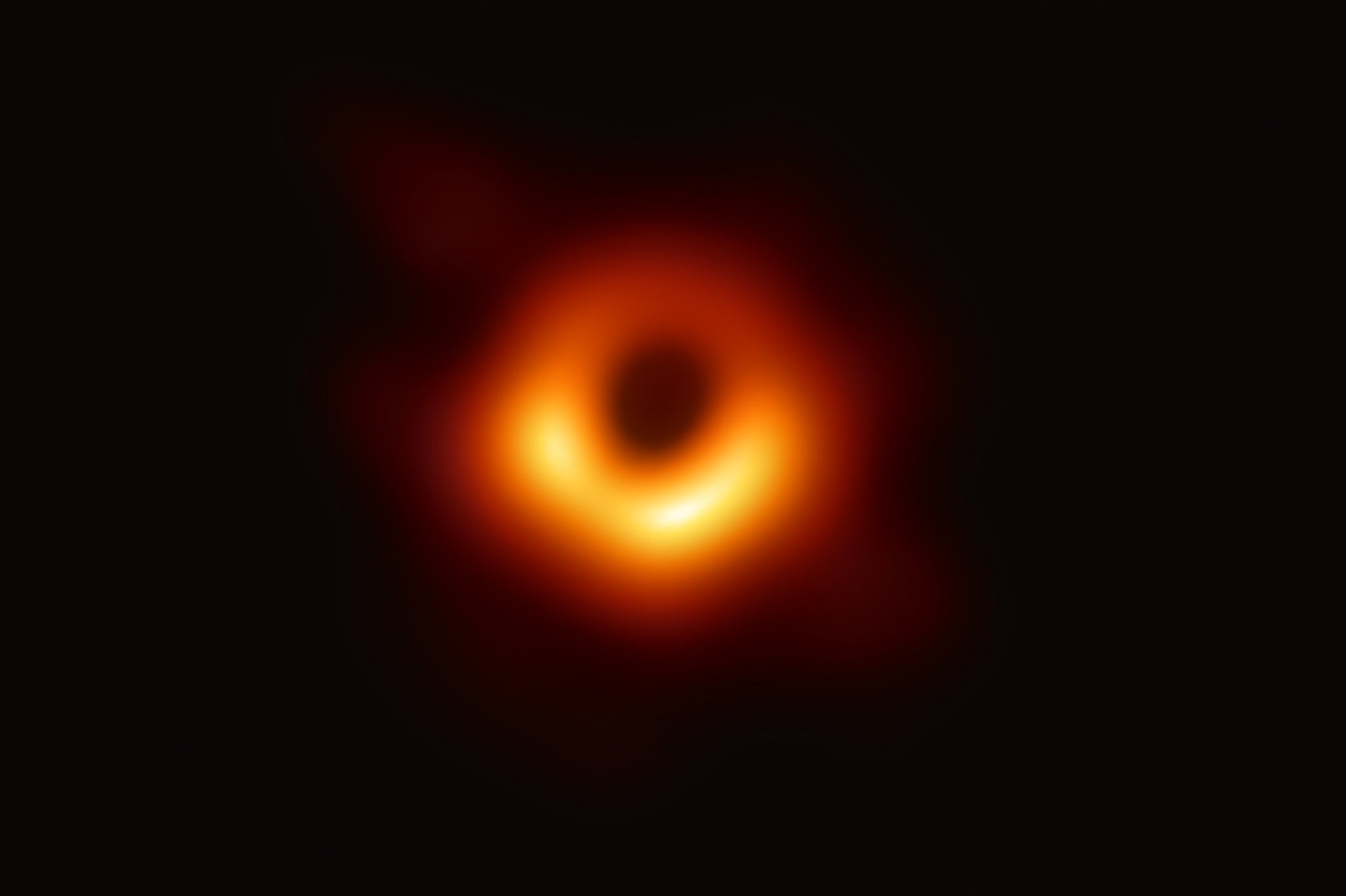Until 2019, no one had ever seen a black hole outside of artistic renditions and theoretical simulations dating back to the 18th century. On Apr. 10, 2019, after years of collaborative work, over 200 researchers from 60 institutions around the globe unveiled the first image of the supermassive blackhole Messier 87 (M87), taken by the Event Horizon Telescope. Daryl Haggard, a professor in the Department of Physics at McGill, is an expert in the study of supermassive black holes and contributed to the global initiative behind capturing M87’s photo. On Sept. 10, Haggard gave a virtual talk, “Observing Black Holes Large and Small,” discussing the science of black holes and the techniques that the group used to capture their groundbreaking photograph.
A black hole is a mass in space that has a gravity so strong that nothing can escape its pull—not even light. The gravitational force of a black hole is so powerful that it extends to the region of space which surrounds the black hole itself, an area called the “event horizon.” Supermassive black holes often form as a result of stellar explosions. Haggard explained, however, that the largest black holes can form through other means, such as when neutron stars—collapsed cores of much larger stars—merge together or join with smaller black holes. A black hole’s extreme gravitational pull results from the drastic disparity between the mass and volume that these explosions and mergers create.
“[M87] has 6.5 billion times the mass of our sun, packed into something that is the size of our solar system, and that’s what makes it a supermassive black hole,” Haggard said during her talk. “The volume that [planet Earth] would be packed into to make [it] into a black hole is something like the size of a sugar cube.”
In order to capture M87’s photo, the team behind the Event Horizon Telescope employed a technique called very-long-baseline interferometry (VLBI). In this process, scientists connect radio telescopes positioned over long stretches of land––referred to as a baseline––allowing each installation to work as though it were a single pane of glass in the lens of a broader telescope. In an interview with The McGill Tribune, Haggard explained that VLBI had previously been set up along the West Coast of the United States to capture images of the interstellar areas around black holes. To focus on the event horizon itself, researchers had to expand their baseline.
“This amazing discovery was […] all made possible by this truly international suite of observatories,” Haggard said in her talk. “It requires a network of telescopes that span the entire globe to get a kind of a quasi-dish that has the diameter of our whole Earth.”
Given black holes’ preclusion of light itself, the question remains as to how researchers can image them while using light-sensitive instruments. Even new methods for observing black holes, such as VLBI, record only photons, the elementary particles of light that surround the black hole’s event horizon, and not the black hole itself.
In M87’s photo, the stable orbit of photons surrounding the black hole, or accretion disk, appears as a blurry ring of orange light with a bottom half that is brighter than the top. This variance in brightness is due to a Doppler effect-like phenomenon. When photons in orbit of a black hole move towards Earth’s telescopes, their frequency is at its highest, and the light appears more vibrant.
At the end of her talk, Haggard explained that in future experiments, researchers hope to take images of M87 with greater visual acuity, which has so far been limited by Earth’s baseline.
“We really want better resolutions, we really want to see all those pretty little photons in data, not just in our simulations, we need a longer baseline,” Haggard said. “If we want a really long baseline, […] going to space might allow [us] to extend that baseline and actually get a more high-resolution image [….] There’s a lot of great food for thought in thinking about next-generation instruments.”








